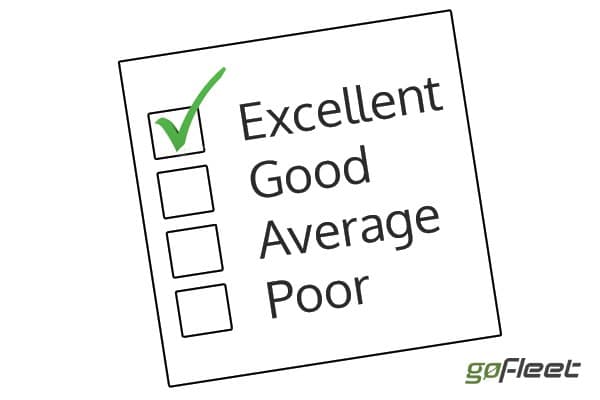How Fleet Managers Can Improve Employee Satisfaction with Telematics
Telematics Improves Employee Satisfaction
In the USA, it’s estimated there are around 22 million employees who are put in the category of having low morale at work which works out to an estimated 350 billion dollars in added costs to businesses every year. [1]
It is frustrating for management to continually oversee defeated, disgruntled and downhearted staff and can also translate into an uncontrollable (yet avoidable) expenses. An increase in staff turnover, decreased employee productivity and worker absenteeism all contribute to the costs businesses are burdened with.
The lack of recognition for hard work, time away from home, and the difficulty making a living are what professional long distance drivers often cite for the reasons they do not recommend their occupation to others [2]. The industry is also predicting a shortage of drivers due to the fact that many baby boomers will be soon retiring from their driving positions [3]. This makes maintaining a happy and satisfied workforce a prominent factor to saving on employee related costs for any fleet company.
What can fleet managers do to cut these costs,
and how can telematics contribute?
Infinite data is provided from telematics systems to analyze, learn from, and be effectively utilized to cut down costs. Often, savings from altered driving habits can be passed on to the drivers themselves if they are exposed to the knowledge base the analysis can provide. If savings can be realized by the drivers themselves, as well as the organization, a reason for work dissatisfaction is minimized. Further to this, transparency with data by an organization is both welcomed and appreciated by workers [4]. Telematics provides an avenue for organizational higher-ups to recognize the importance and value of their fleet drivers.
With such independent and isolated work, it can be challenging to recognize and reward loyal and top performing employees to provide pride and motivation. Telematics systems provide you with strong metrics and flexibility to narrow down and track the exact type of behaviour to reward while providing clear goals for drivers to find motivation in. For example: recognizing and even rewarding drivers with the least number of a specific exception violation will provide management the awareness they are seeking. As an added bonus, the fleet assets as well as employees will be safer overall.
Additionally, employees with clear expectations within the organization will reduce stress they endure [5]. Using Telematics to translate “efficient”, “safe” or “compliant” driving expectations into measurable actions eliminates any confusion in the employee-management relationship. In turn, this will uplift the quality of drivers’ work, helping to reduce stress, and increase satisfaction with their job.
Telematics is a fleet management tool that can be used by businesses to realize financial gains as well as increased productivity, optimization, safety and compliance [6]. However, there is also the opportunity for fleet managers to dive deeper and use telematics as a tool to curtail defeated, disgruntled and downhearted staff. Use the substantial capabilities of our telematics to boost the employee-employer relationship, increase employee morale, and eliminate the manifestations of staff dissatisfaction that can be detrimental to any organization.
Main Source:
Original Article By: Caitlin Johnson, Human Resources Assistant at Geotab
http://www.geotab.com/blog/how-fleet-managers-can-manage-and-improve-employee-satisfaction-with-telematics/
Other Sources:
[1] graphs.net/how-to-boost-employee-morale
[2] questia.com/determinants-of-job-satisfaction-among-long-distance
[3] questia.com/determinants-of-job-satisfaction-among-long-distance
[4] graphs.net/how-to-boost-employee-morale
[5] onlinelibrary.wiley.com/
[6] geotab.com/gps-fleet-management-solutions



